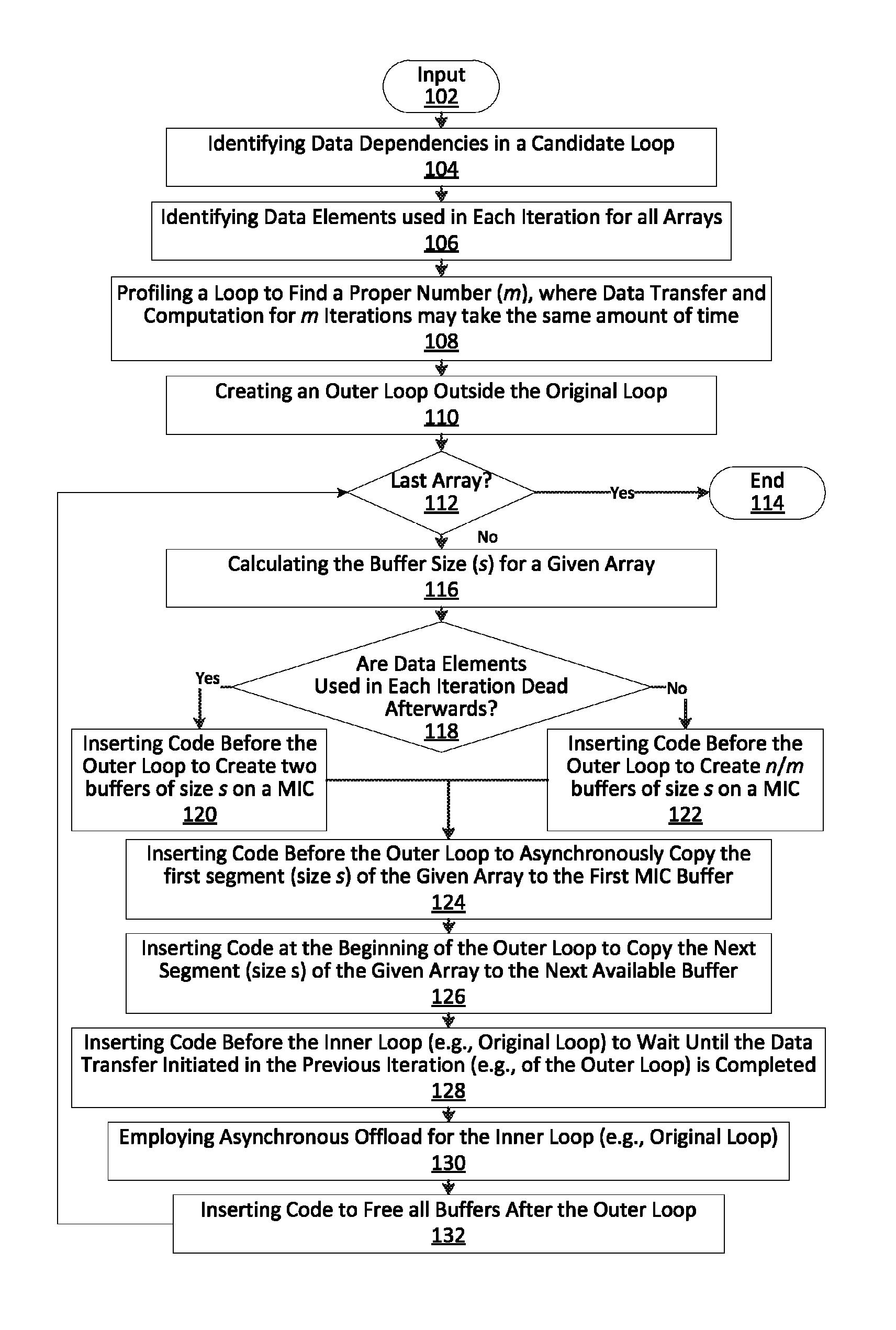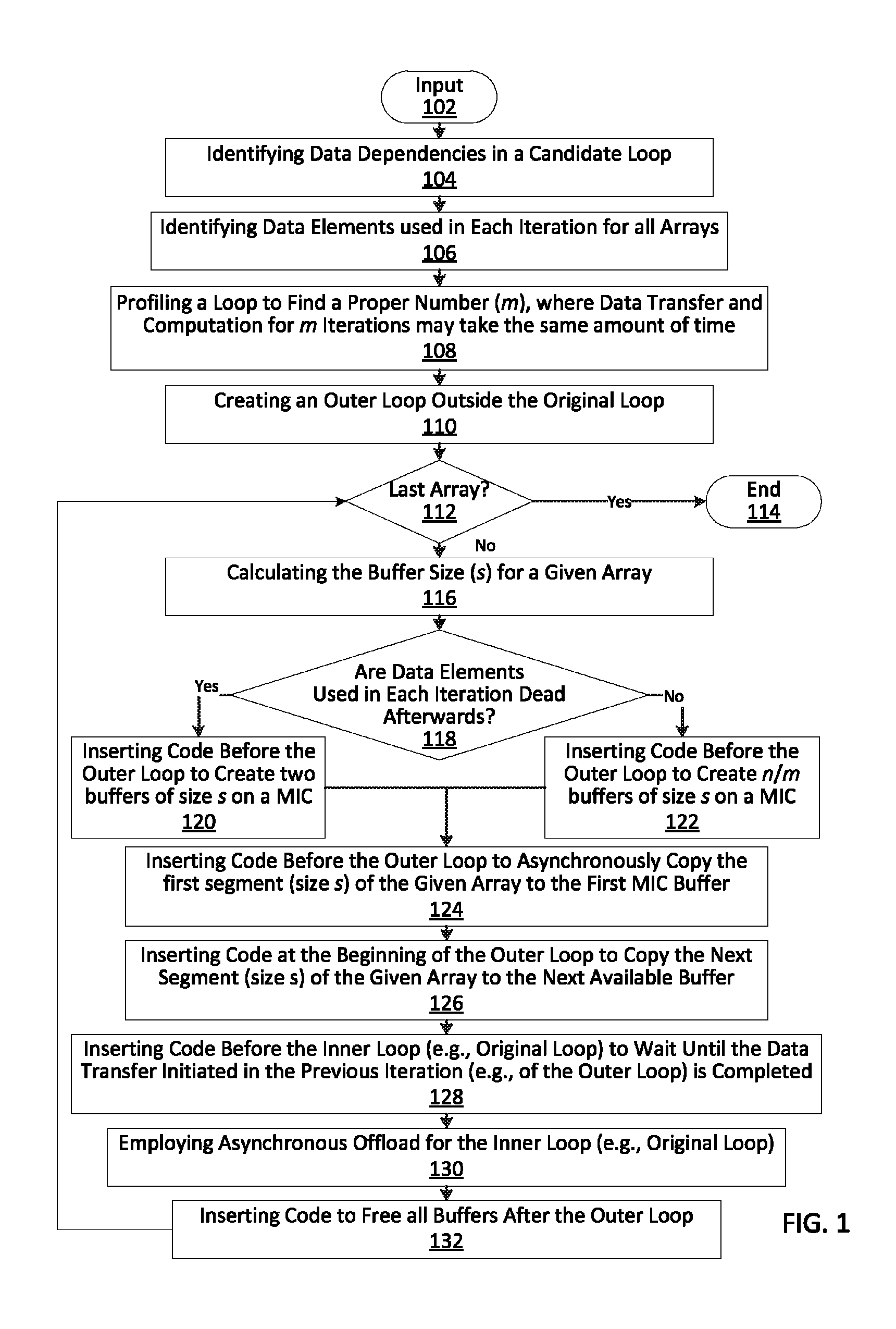Compiler optimization for many integrated core processors
a compiler optimization and integrated core technology, applied in computing, program code transformation, instruments, etc., can solve the problems of reducing the performance gap between compiler optimized code and highly tuned cuda code, requiring very high expertise and effort from programmers to understand and make good use of the underneath architecture, and achieving the effect of hiding data transfer overhead and reducing the memory footprint employed
- Summary
- Abstract
- Description
- Claims
- Application Information
AI Technical Summary
Benefits of technology
Problems solved by technology
Method used
Image
Examples
Embodiment Construction
[0017]In accordance with the present principles, systems and methods are provided for automatically optimizing performance on Many Integrated Core Coprocessors (MICs) (e.g., Intel® Xeon® Phi Coprocessors).
[0018]It has been shown that achieving good performance on MICs (e.g., Intel® Xeon® Phi Coprocessors) is not a straightforward task for programmers. For example, one may compare the speedups of a set of Open Multi-Processing (OpenMP™) benchmarks on a multicore central processing unit (CPU) and an Intel® Xeon® Phi Coprocessors, with all speedups are normalized to the CPU versions. These codes are intrinsically parallel with minimal communication and expected to have high performance on manycore processors. The parallel performance on the CPU may be measured using 4-6 threads, while the Intel® Xeon® Phi Coprocessors performance may be measured using 200 threads.
[0019]In this situation, the Intel® Xeon® Phi Coprocessors performs poorly for eight many benchmarks, as compared to the CPU...
PUM
 Login to View More
Login to View More Abstract
Description
Claims
Application Information
 Login to View More
Login to View More - R&D
- Intellectual Property
- Life Sciences
- Materials
- Tech Scout
- Unparalleled Data Quality
- Higher Quality Content
- 60% Fewer Hallucinations
Browse by: Latest US Patents, China's latest patents, Technical Efficacy Thesaurus, Application Domain, Technology Topic, Popular Technical Reports.
© 2025 PatSnap. All rights reserved.Legal|Privacy policy|Modern Slavery Act Transparency Statement|Sitemap|About US| Contact US: help@patsnap.com



